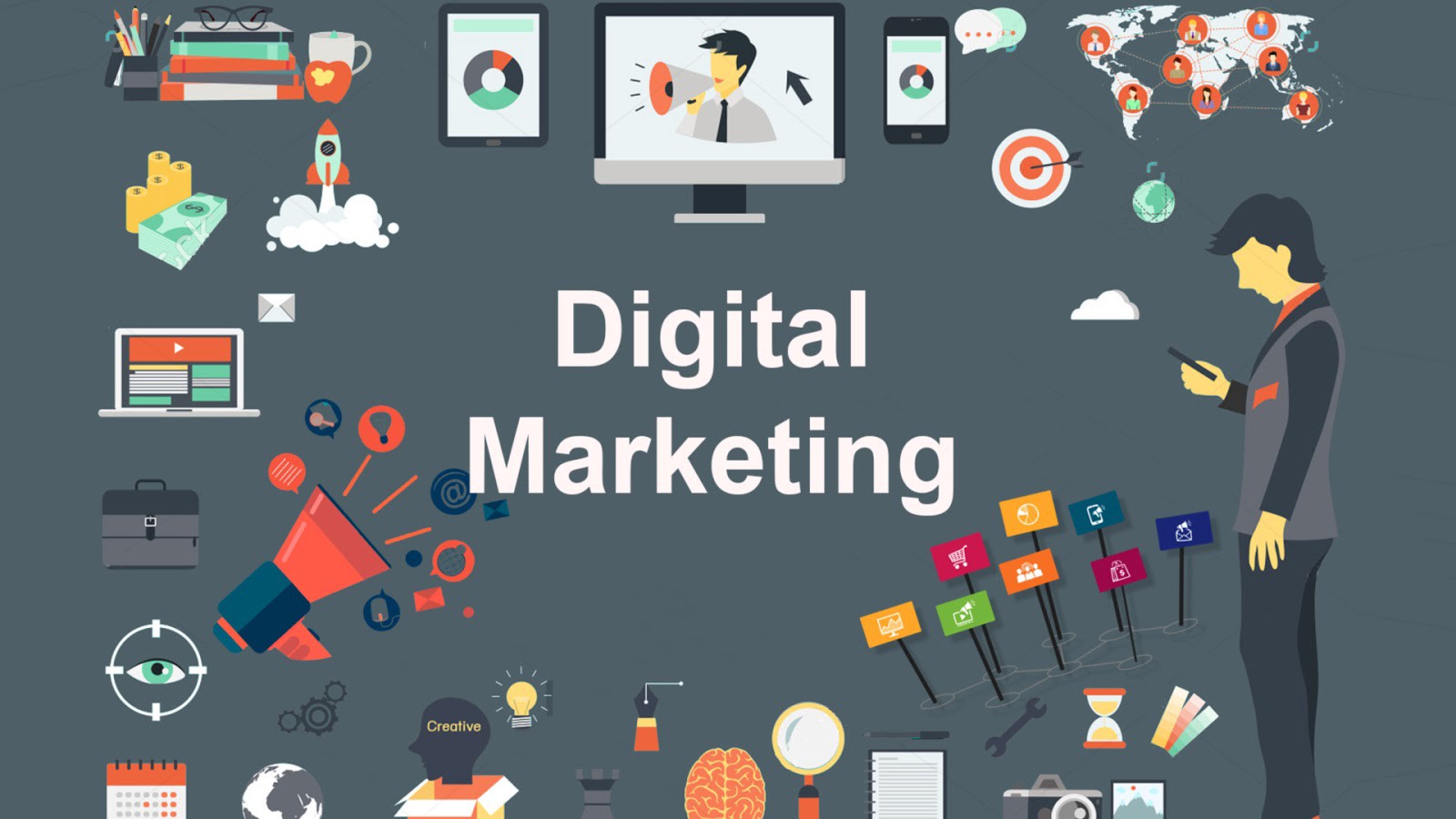The Function of SEO in Digital Marketing Lockhart for Greater Reach
The Function of SEO in Digital Marketing Lockhart for Greater Reach
Blog Article
Transform Your Service With Data-Driven Digital Marketing
In today's rapidly advancing industry, leveraging data-driven digital advertising and marketing has become important for organizations aiming to improve their affordable edge. By using analytics to acquire understandings into consumer actions, organizations can customize their advertising and marketing methods for maximum influence. This strategy not just fosters much deeper engagement yet likewise enhances brand commitment with individualized experiences. As we check out the details of executing reliable data-driven strategies, it is vital to consider exactly how these approaches can fundamentally improve your advertising and marketing efforts and influence your profits. What crucial elements should you focus on to guarantee success?
Comprehending Data-Driven Advertising
Data-driven marketing is progressively acknowledged as an important technique for services intending to boost their advertising and marketing efficiency. This technique relies upon the methodical collection, analysis, and application of data to notify marketing strategies and decisions. By leveraging numerous information resources, consisting of client demographics, behavior patterns, and market fads, businesses can develop targeted campaigns that reverberate with specific audiences.
At its core, data-driven marketing includes incorporating analytics into the marketing procedure. This permits for real-time insights into campaign efficiency, allowing marketing professionals to make enlightened modifications and optimize their approaches. By comprehending customer choices and interaction levels, companies can craft individualized messaging that is more probable to transform prospective customers into faithful clients.
In addition, data-driven advertising fosters a culture of responsibility within organizations. As services welcome data-driven marketing, they position themselves to respond efficiently to transforming market characteristics and customer assumptions.
Benefits of Data Analytics

One of the key benefits is the capacity for personalized advertising and marketing. Information analytics allows companies to segment their target market successfully, tailoring messages and supplies that reverberate with particular teams. This degree of personalization not just enhances engagement prices but additionally promotes brand name loyalty.
Moreover, information analytics promotes real-time decision-making. Marketing professionals can keep an eye on campaign efficiency continually, readjusting strategies based on immediate responses and results. This dexterity causes optimized source allotment and boosted roi.
Additionally, anticipating analytics empowers services to prepare for future patterns and customer needs, permitting aggressive strategies as opposed to responsive measures. This foresight can be a substantial competitive advantage in today's vibrant market landscape.
Trick Tools and Technologies

Among the vital technologies is Customer Connection Administration (CRM) software program, which allows companies to handle client communications and assess information throughout the consumer lifecycle. In addition, marketing automation platforms improve recurring jobs, promoting individualized interaction and lead nurturing.

Information visualization devices, such as Tableau and Google Data Workshop, aid experts translate complicated data sets, presenting understandings in a conveniently absorbable layout. In addition, analytics systems like Google Analytics give invaluable metrics on website web traffic and customer habits, allowing marketing professionals to enhance their techniques.
Social network analytics tools, such as Hootsuite and Sprout Social, supply understandings into audience involvement and web content performance across numerous platforms. A/B testing devices, like Optimizely, enable marketers to experiment with various approaches, making sure that data-driven decisions are continuously improved. By leveraging these technologies, services can foster a data-centric culture, causing extra efficient digital advertising projects.
Applying Effective Approaches
To successfully carry out effective methods in electronic marketing, organizations should initially straighten their goals with workable understandings stemmed from information analytics. This placement enables organizations to tailor their advertising initiatives, guaranteeing they resonate with target audiences. By check these guys out leveraging data from numerous channels, such as social networks, e-mail advertising and marketing, and website analytics, business can determine fads, choices, and behaviors that educate their approach.
Following, it is essential to prioritize client division. By classifying their target market based upon demographics, passions, and acquiring behaviors, organizations can create personalized marketing campaigns that drive engagement and conversion. Automation tools can facilitate this process, allowing marketing experts to deliver timely, relevant web content to specific segments.
In addition, embracing an agile marketing approach can enhance responsiveness to market adjustments and consumer comments. Regularly click now examining project efficiency and making data-driven modifications can maximize results and source appropriation.
Lastly, fostering a society of cooperation between marketing, sales, and data analytics groups is necessary. This multidisciplinary technique guarantees that insights are properly shared and incorporated into broader organization methods, eventually driving sustained development in a competitive landscape.
Measuring Success and ROI
Just how can organizations effectively determine success and roi (ROI) in electronic advertising? The answer hinges on developing clear purposes and utilizing the right metrics. Beginning by defining vital efficiency indicators (KPIs) that line up with business objectives, such as conversion rates, consumer acquisition expenses, and involvement metrics. These KPIs offer a measurable basis for assessing the performance of digital advertising and marketing efforts.
Making use of analytics devices is necessary in this process. Platforms such as Google Analytics and social networks understandings enable companies to track individual actions and project efficiency in actual time. By assessing data, companies can identify which methods yield the most effective outcomes and assign sources accordingly.
In addition, employing ROI computations can provide a clearer image of monetary efficiency (Digital Marketing Lockhart). This includes gauging the profits generated from electronic marketing efforts versus the total prices sustained. A simple formula is (Net Profit/ Cost of Investment) x 100 to figure out the ROI portion
Inevitably, a comprehensive method that integrates qualitative and quantitative evaluation will allow organizations to assess their digital advertising success precisely and make informed decisions for future campaigns. This data-driven attitude is crucial for continual renovation and lasting growth.
Conclusion
Finally, the assimilation of data-driven electronic marketing represents a transformative approach for organizations looking for to enhance involvement and foster brand name loyalty. By leveraging analytics to inform strategies, companies can enhance resource allocation, adjust to market dynamics, and enhance roi. The utilization of key devices and modern technologies further promotes this process, guaranteeing that marketing efforts are aligned with customer behavior and assumptions. Inevitably, welcoming data-driven methods is necessary for sustained affordable read what he said benefit in a quickly evolving landscape.
In today's quickly evolving market, leveraging data-driven digital advertising and marketing has actually become necessary for businesses aiming to boost their competitive side (Digital Marketing Lockhart).Data-driven advertising and marketing is increasingly acknowledged as an essential approach for companies intending to boost their advertising and marketing effectiveness.At its core, data-driven marketing entails incorporating analytics right into the advertising procedure. As companies accept data-driven advertising and marketing, they position themselves to respond efficiently to altering market characteristics and customer assumptions
In conclusion, the integration of data-driven digital marketing represents a transformative technique for services looking for to boost engagement and foster brand loyalty.
Report this page